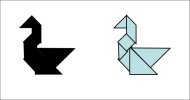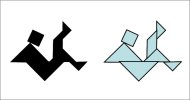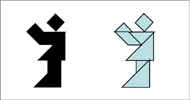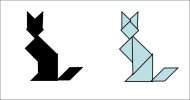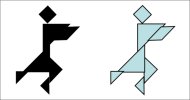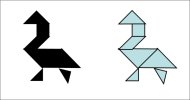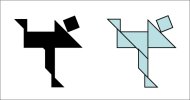I became interested in tangrams for two reasons: they look like interesting puzzles and I thought they might make enjoyable woodworking projects. I also bought a book called The Tangram Book by Jerry Slocum which is where I did most of my initial reading about these puzzles. I highly recommend this book!
Here is a drawing of the "basic" tangram design:
(Click for larger image)
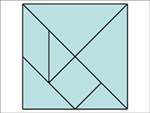
And here is a drawing of the basic tangram square design with two smaller squares below it. These squares are made by rearranging the seven shapes contained in the original larger square:
(Click for larger image)
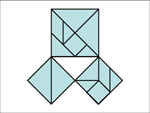
Now, on to some puzzle fun. The puzzles are silhouettes of designs or patterns. Your goal is to rearrange the pieces to match the puzzle shape. The rules are pretty simple. To make the figures, you must use all the puzzle pieces and they must not overlap. You'll be surprised at how difficult it can be to make figures that would appear to be very simple.
Many of the early puzzles were made to look like people or animals. I've recreated some of them below showing both the silhouette and the "answer" where you can see how the pieces were arranged. (You can click on the images to see larger versions.)

